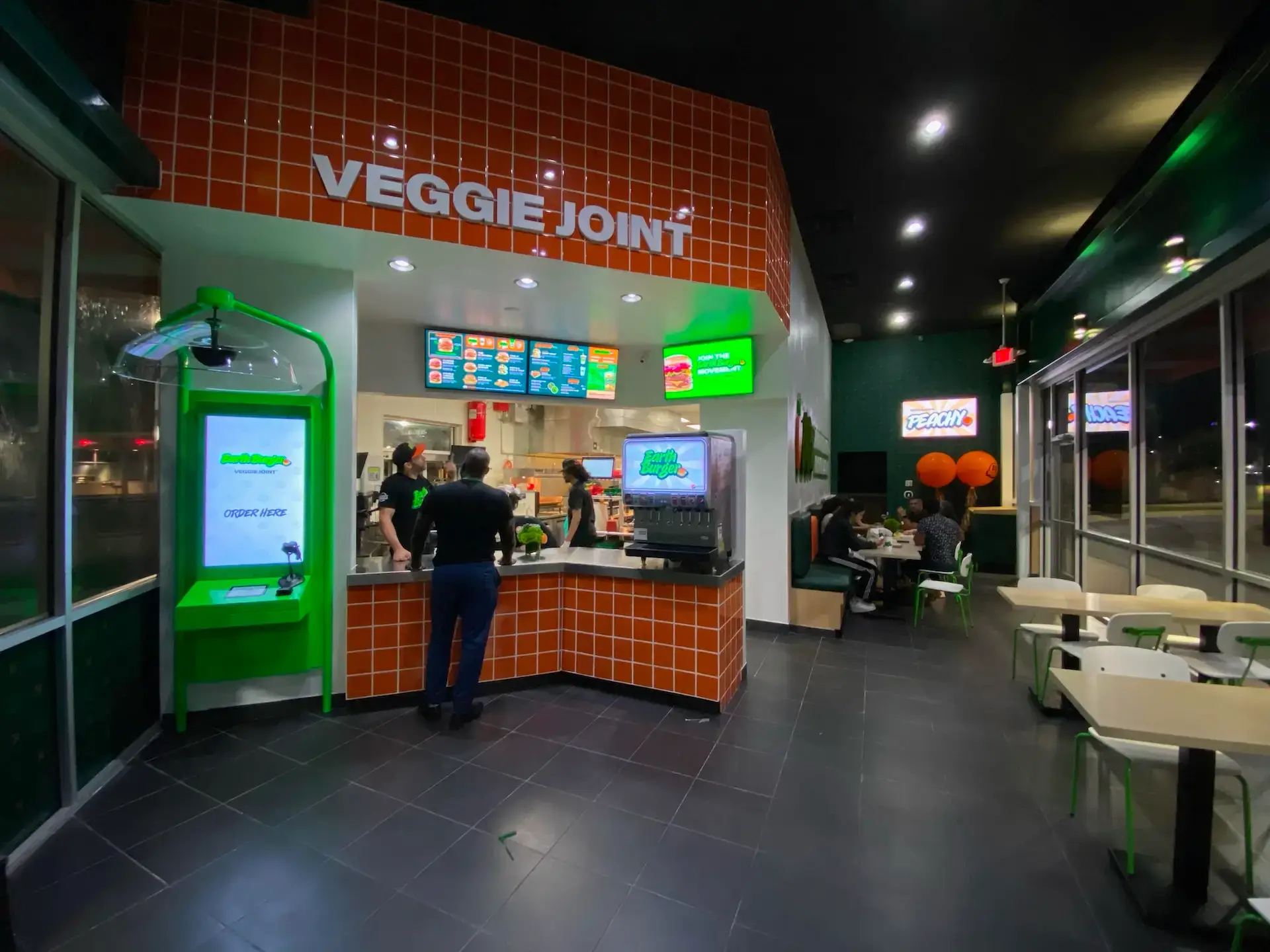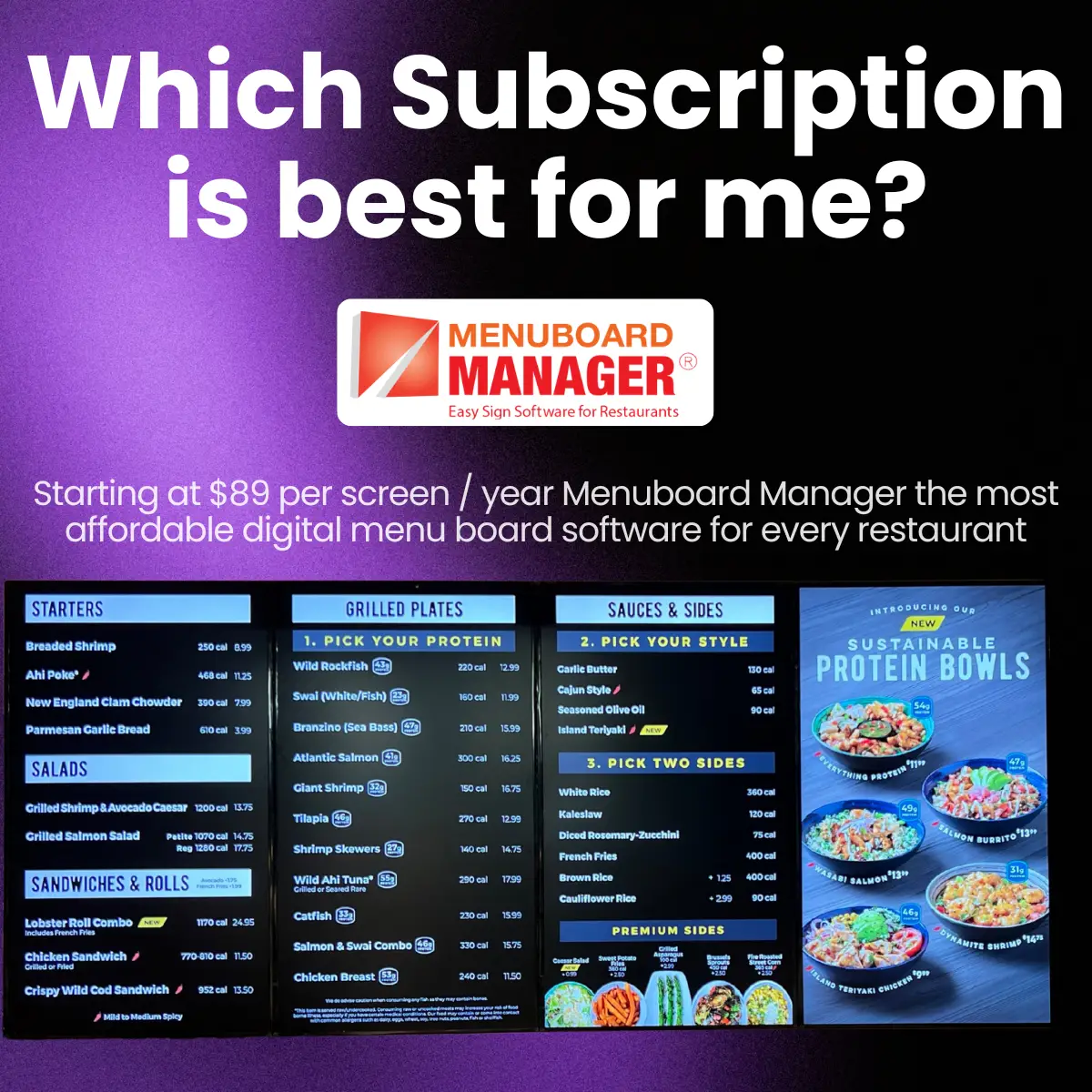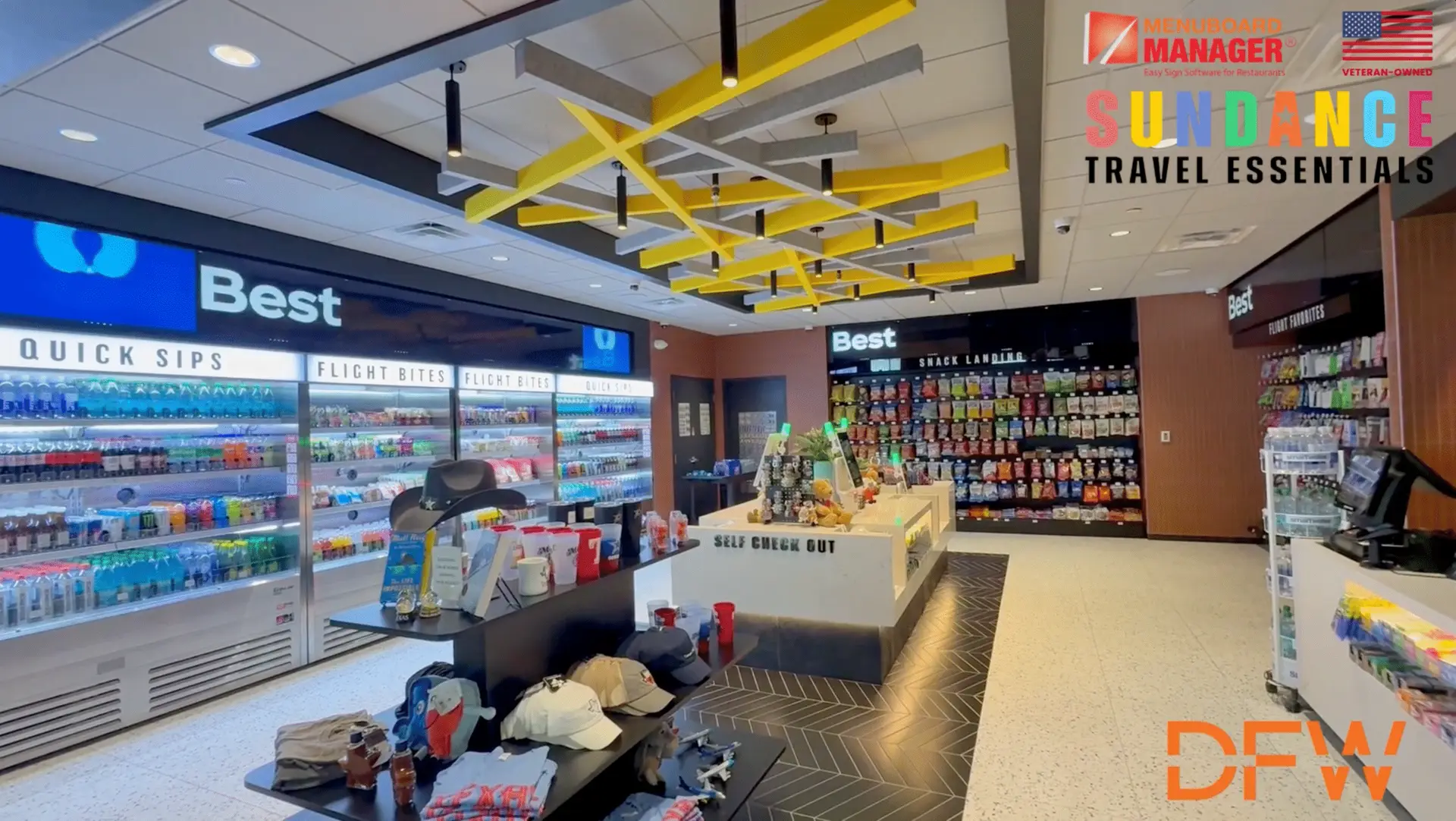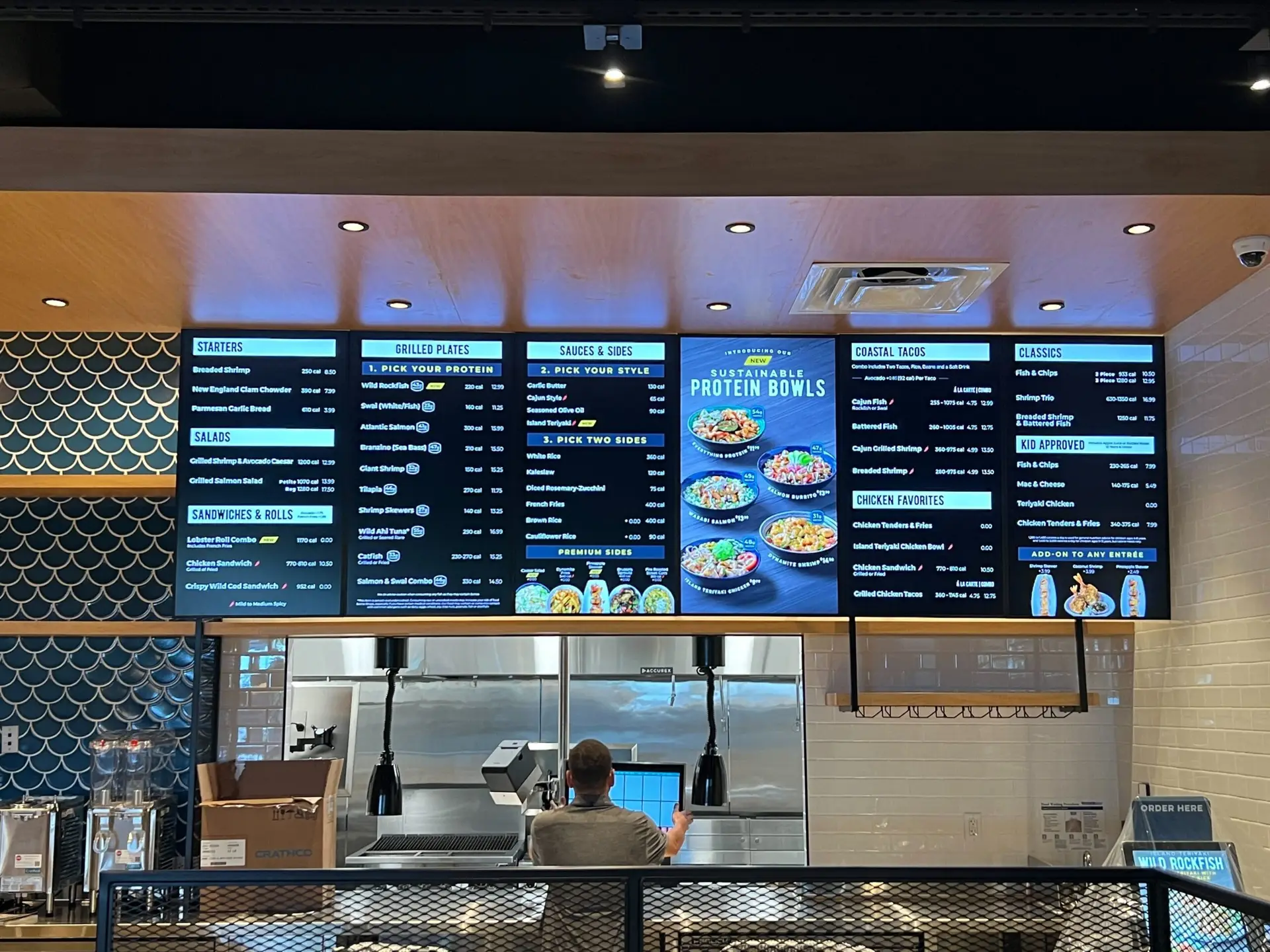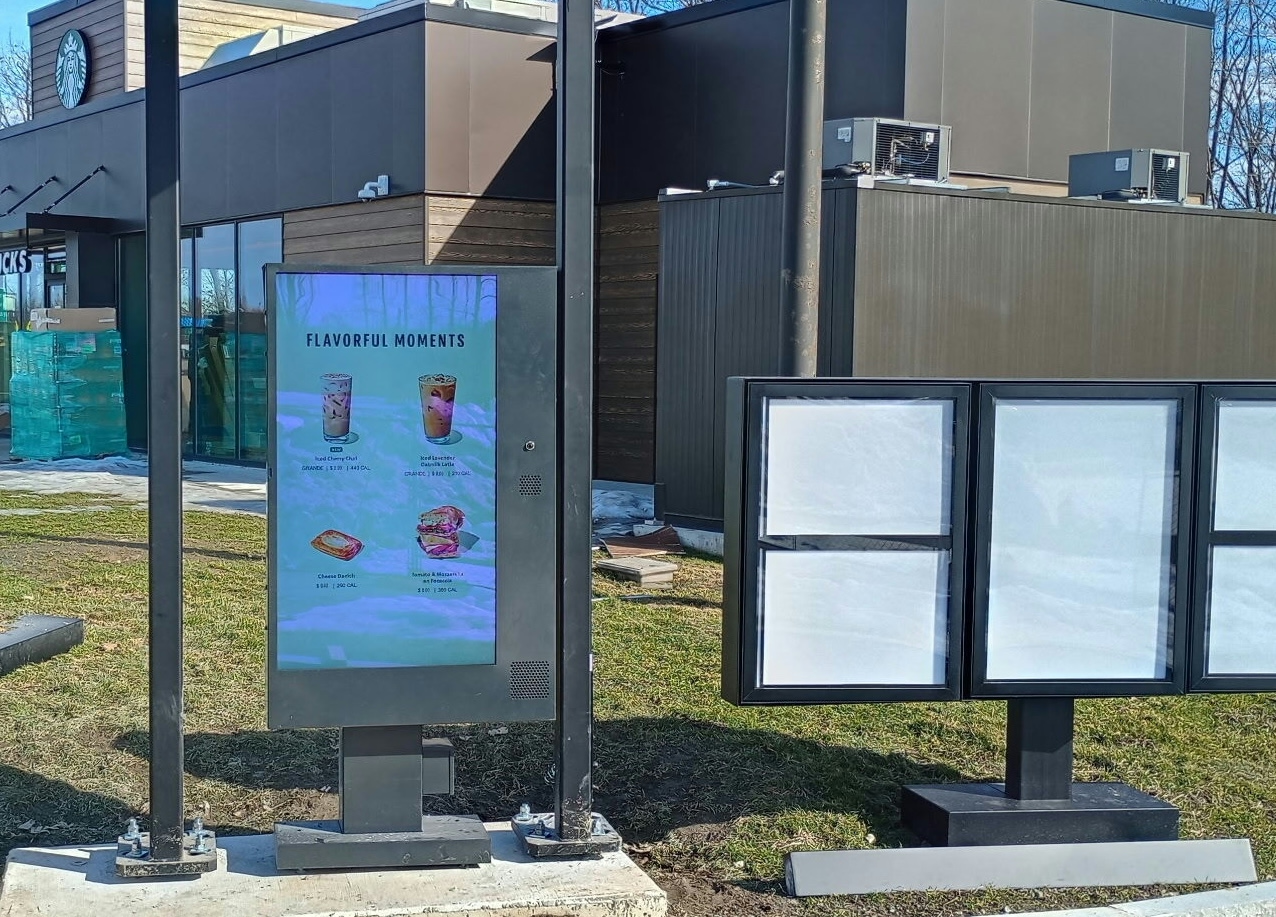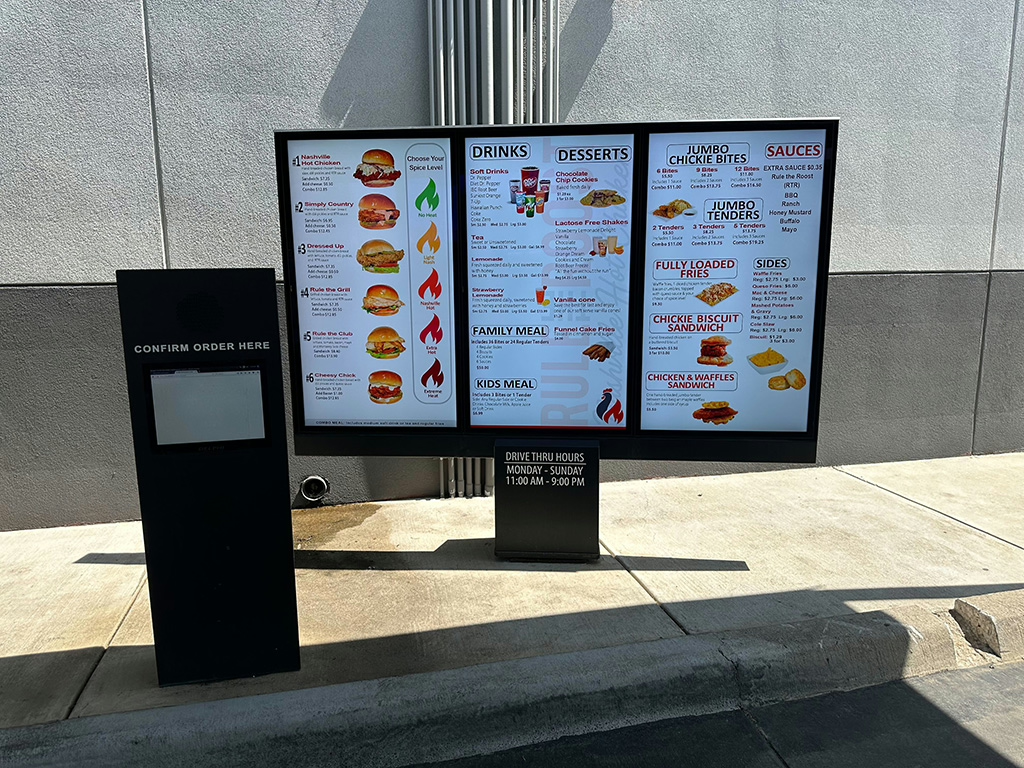Modern dining restaurants now embrace digital menu boards to improve the customer experience and streamline operations. They replace static, printed menus with attractive, dynamic displays, engaging customers and offering flexibility and efficiency beyond the classic one.
What Are Digital Menu Boards?
Digital menu boards are an innovative and dynamic way of representing menu items inside the restaurant environment. Electronic screens replace stagnant printed menus. They constitute all the essential elements: hardware, software, and content.
- Hardware includes digital screens, media players, and mounting accessories. Depending on a restaurant’s size and requirements, a digital screen may come in several sizes, including small monitors or large LED displays. A media player is a device that stores and plays digital content.
- Software is the component that manipulates and controls the content on digital menu boards. It and its different drivers enable restaurant owners and managers to update their menus quickly, change prices, insert promotional content, and schedule content. Much of this software is offered on a cloud basis, providing high flexibility and access from remote locations.
- Content is all visual and textual information that appears on the screens. It includes menu items, pricing, images, videos, and promotional messages. Using high-quality content will grab customers’ attention and keep them interested.
How Do Digital Menu Boards Function?
Digital menu board functionality is best understood to involve several steps, from the creation of content to its display and updating. The whole process is as follows:
- Content Creation: The first step is to create the digital content to post. It involves designing the menu, taking quality shots of the various dishes, making videos, and writing promotional write-ups. All the created content must be graphically aesthetic in its elements and the entire semblance of the restaurant’s branding.
- Content Management: Once the content is ready, you upload it into a content management system (CMS). CMS is a software platform that organizes and schedules the content for display. Users can log in to the CMS from any device with an internet connection, meaning updating and managing information has been simplified.
- Scheduled Content: The CMS lets restaurateurs set how they display content on the application. The perfect example would be scheduling breakfast menus to appear in the morning, lunch menus in the afternoon, and dinner menus in the evening. The promotional content should come at a particular time or date.
- Content Distribution: CMS distributes the content on media players connected to digital screens. The most common method is the Internet, allowing real-time changes and updates. The media player stores all content and plays it at scheduled times on several screens.
- Display and Updates: The media players ensure that content is streamed continuously to digital screens in a manner that should have relevant menu items and promotions updated at all times. Whether changing the price of a menu item or including a new item on the menu, You can make real-time changes from the CMS dashboard, and these on-the-fly adjustments will instantly reflect on the menu boards.
This process underlines the seamless integration of content generation, management, and display that defines the functionalities of digital menu boards.
Benefits of Digital Menu Boards for Restaurants
Digital menu boards offer many benefits over traditional menu boards, which make them quite fancy for modern restaurants.
- Improved Customer Engagement: Digital boards attract customers’ imaginations much more than static menus. They are draped with high-definition images, videos, and rich animations that engage customers and keep their focus on the menus, which may impact customer purchase behavior. Bright, dynamic displays attract customer attention and retention more.
- Increased Sales: Digital menu boards can drive sales through promotional items, special offers, and new menu items. An attractive way of displaying upselling and cross-selling can optimally support combo deals and add-ons.
- Dynamic Informational Display: Unlike static, traditional menus, digital menu boards allow restaurateurs to display information dynamically, changing it based on the time of day, special events, or seasonal promotions. It ensures that the correct data is shown at the right time, providing a consistent customer experience.
- Efficiency: Using a digital menu board eliminates the need for printed materials and manually updated boards. It can easily change the content remotely, saving time and resources. It is most helpful when saving up on efficiency for chain restaurants.
Implementing Digital Menu Boards
Setting up and integrating digital menu boards involves:
- Choose the Right Hardware and Software: Use quality digital screens and reliable media players that fit your restaurant. The software must be user-friendly and have extensive content management and scheduling features.
- Setup and Integration: Project the digital screens at every restaurant apartment site to give the viewer the best exposure. Check the screens’ connectivity with the media players and the media players’ connectivity with CMS. Content system testing ensures schedules work out as planned.
Tips for Setup and Integration:
- Ensure robust internet connectivity for seamless content updates.
- Use high-quality images and videos to enhance visual appeal.
- Regularly update content to keep it fresh and relevant.
- Train staff on using the CMS to manage content efficiently.
Digital signage menu boards are among the best tools for modern restaurants to ensure high engagement, increase sales, and improve overall operational efficiency. Menuboard Manager offers a combined solution with the best hardware and software to guarantee excellent performance and integration for those who want to implement such systems.



